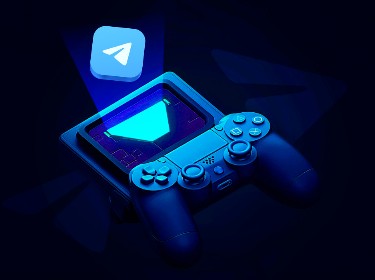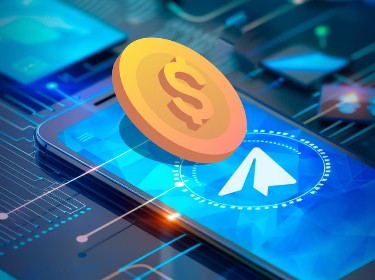Technological advancements are continuously reshaping game development and the player experience. From the humble beginnings with Nokia’s Snake to the expansive metaverse and ninth-gen consoles, the gaming industry remains ever-evolving.
Over the past few years, the gaming industry has experienced remarkable growth and change. By 2025, it’s projected that the global gaming market will reach an impressive annual revenue of $268.8 billion.
Today’s games, far from the pixelated graphics of the past, deliver lifelike experiences, thanks to the advancements in sophisticated technologies.
Interested in the forces behind this shift?
Explore this article to learn about the six tech trends that will shape the gaming future in 2025 and beyond.
What does the gaming industry look like at the moment?
The evolution of the gaming industry is a testament to technological advancement and changing consumer preferences. Its commercial origins can be traced back to the 1950s when gaming was considered a technological anomaly. From the initial gaming consoles attached to televisions, the industry transitioned to computer games and later underwent a significant transformation with the advent of internet and mobile games.
The recent surge in mobile gaming can be attributed to various factors, including the social interaction needs during the COVID-19 pandemic. This surge has propelled the industry’s rapid development.
In 2022, the global gaming industry witnessed a record year with over 1300 deals, amounting to a disclosed deal value of $127 billion.
As of 2023, several mobile and online games have reported impressive earnings, emphasizing the industry’s resilience. For instance, Honor of Kings, a Chinese MOBA, led with a revenue of $864.32 million, followed closely by games like PUBG Mobile, Candy Crush Saga, Genshin Impact, and Roblox.
Traditional gaming powerhouses like Nintendo, Sony, and Microsoft continue to innovate in the console domain. Simultaneously, tech giants such as Google, Apple, and Meta are venturing into games that harness cloud and AI capabilities.
As we look to the future, emerging technologies like advanced 3D graphics, the metaverse, AR/VR, and blockchain are set to redefine the video gaming landscape.
Let’s delve deeper into these transformative trends.
1. AR/VR gaming
![]()
Augmented Reality (AR) and Virtual Reality (VR) are raising the stakes for companies building immersive mobile gaming experiences. While VR gaming has been around for longer, AR gaming has blossomed more quickly. VR is still a niche gaming segment, expected to enjoy its big moment over the next ten years.
What is AR/VR gaming?
An augmented reality game superimposes a pre-created digital environment over the user’s environment in real-time. AR games require simple devices like smartphones, tablets, or portable gaming systems. Some more advanced AR games actually build a digital environment using the player’s surroundings.
Despite numerous earlier endeavors in AR gaming, it wasn’t until the 2016 release of Pokémon Go that the genre truly found its stride.
Utilizing a smartphone’s camera, clock, GPS, and gyroscope, Pokémon Go crafted a captivating location-based augmented reality environment.
From January to August 2023, the in-app purchase revenues for Pokémon GO surpassed $324 million globally. Remarkably, its peak profitability came in 2020 when the COVID-19 pandemic led many to discover and immerse themselves in the game.
The gaming industry tried to implement VR in games as early as the 1980s. However, consumer-ready VR headsets appeared only in the 2010s.
In 2013, the launch of Oculus Rift, a consumer-friendly, low-cost VR headset, marked the real beginning of VR in gaming. Shortly after, in 2015, Valve and HTC launched their HTC Vive, while Sony released its PlayStation VR in 2016.
As of 2023, some of the most popular VR games include Horizon Call of the Mountain, Half-Life Alyx, and F1 23 , to name a few.
The current challenges for AR and VR
A few concerns are hampering the widespread adoption of VR among the masses. Firstly, the headsets are bulky and pricey. Developers are already working on these aspects, and we can soon expect low-priced, lightweight VR headsets to be available. Another concern is that VR gaming entails socially isolating experiences. However, experts believe that the future of VR gaming lies in VR gaming experiences that are both social and hyperreal.
The challenges in relation to the widespread adoption of AR stem from the fact that the user’s AR experience is quite limited in nature because a smartphone is unable to display visuals accurately. Disturbances can arise due to electrical signals in urban areas. Moreover, regulations concerning the collection, use, and processing of data are something of a gray area, which is having a negative impact on the adoption of AR technology.
Future of AR/VR gaming
The convergence of AR and VR is poised to redefine the gaming realm.
By 2025, the global AR/VR gaming user base is projected to reach an impressive 216 million users, emphasizing a shift towards more immersive gaming interactions.
Beyond this, the development of the metaverse, an interconnected virtual universe, is capturing industry attention, too. In the metaverse, players are not merely participants but active contributors to evolving digital ecosystems. This shift is more than theoretical. By 2028, the metaverse in gaming market is expected to soar to a whopping $119.2 billion in revenue.
Together, AR, VR, and the metaverse are charting a bold future for gaming, promising unparalleled immersion and interactivity. These technologies are not only transforming the way players experience games but also reshaping the economics, design philosophies, and social dynamics of the industry.
As developers harness the full potential of this triad, we can anticipate a gaming ecosystem that offers richer narratives, more meaningful player-to-player interactions, and a seamless blend of the virtual and real worlds, blurring the lines of what’s possible in interactive entertainment.
2. AI in gaming
![]()
Artificial intelligence solutions are deployed in gaming to enhance the player’s experience.
AI has a significant role in enabling developers to deliver console-like gaming experiences across multiple devices such as smartphones, tablets, and smart TVs. Whether it’s racing, strategy, or shooting, any game can have features enabled by AI.
What is AI gaming?
AI in gaming refers to generating responsive, adaptive, and intelligent behaviors, particularly from the non-player characters (NPCs). AI adds a unique feature to these NPCs — the ability to learn. This helps to make them act intelligently and creatively as if controlled by another human player. AI constantly records and tracks the behavior of the players and uses it to predict their future actions.
The use of AI in video games dates back to the 1950s. Most NPCs back then lacked the learning ability. Video game developers programmed the NPC’s behaviors but now, thanks to the evolution of AI and machine learning, developers can train games to study their patterns and processes for themselves. It means that AI games now shift control of the game experience to the player, by allowing the gamers’ behavior to help produce the game experience. This function is known as AI procedural generation: the game data is generated algorithmically instead of the developer specifically coding individual elements.
AI not only personalizes the whole gaming experience but also saves on game design costs. These qualities put AI at the cutting edge of how games are developed and played. Some popular games that use AI are AI Dungeon, Humankind, and Manifold Garden.
Future of AI gaming
AI will continue to impact the gaming industry in 2025. Maybe we can expect to see a massive shift to more advanced visuals and NPCs that could create their own storylines.
What’s more, generative artificial intelligence, a new branch of AI, is making inroads into the gaming sector, too. Leveraging this innovative technology could mean games that offer dynamically crafted landscapes, plots, and characters, each ensuring a unique gameplay experience for players. Moreover, the global generative AI in the gaming market is projected to reach $7,105 million by 2032, which proves that gen AI in gaming is poised to evolve further.
With such advancements, players may soon find themselves navigating ever-evolving challenges and narratives sculpted in real-time by the AI, heralding a new era of immersion and innovation in the industry.
Want to create your own AI-driven app? Our machine learning engineers can help you out!
3. Blockchain gaming
Blockchain technology has the potential to revolutionize the experience of developing, managing, and playing games. This has led to a surge in demand for web development services for the gaming industry that can build marketplaces and platforms for these new blockchain-based games.
The idea of using blockchain and NFTs in gaming has not taken off yet, but it is reckoned to be a perfect combination because it promises to monetize the concept of gaming for players.
What is blockchain gaming?
Most games have an economy inside them in the form of assets or gaming currency. To date, these assets have always remained stuck inside the games. Blockchain and non-fungible tokens (NFTs) will allow players to own and transfer their in-game assets to the real world. Blockchain can also secure the user’s account within the games.
Blockchain offers to solve some legacy problems of the gaming industry. Firstly, modern games offer a range of in-app purchases. However, these virtual assets can be scarce and also lacking in transparency and verifiability. Blockchain enables the tokenization of these virtual assets and creates decentralized gaming asset markets.
What’s more, the ledgers of these market transactions are open for everyone to verify. A trusted NFT development agency can help implement the cutting-edge tech to store unique gaming assets in crypto wallets and even trade them in the open market. Lastly, phishing scams have to date plagued the free-to-play gaming world. Blockchain can create an immutable gaming economy, banishing these security threats.
Innovators like Atari and Enjin have already implemented crypto coins and NFTs to keep fraud at bay. Games like CryptoKitties, Spells of Genesis, and Gods Unchained have successfully adopted blockchain solutions within their environment. This has opened up new opportunities for STO development services for the gaming industry, helping developers launch their own tokens to fund development and engage players.
The challenges of blockchain in gaming
The main challenges to the wider adoption of blockchain and NFTs in games are firstly the increased transaction costs, and secondly the convenience of centralized servers. Smart contracts do not sustain complex games, which are easier to develop on centralized servers.
Developers also need to dive deep into the storyline, graphics, effects, and the overall gaming experience to attract gamers who are looking for leisure activity and are not just focused on the collectibles aspect of it. Therefore developers must ensure that every individual game has different economic incentives. The best solution is to shape the blockchain’s functionality around the developers’ expectations of the game.
Future of blockchain gaming
The rise of crypto games has firmly positioned blockchain at the forefront of the digital gaming revolution. This prominence stems from the unique ability of blockchain gaming to assign tangible value to players’ in-game time. This convergence of gaming and blockchain is also driving the demand for game development services for the social media industry, as platforms seek to integrate interactive, blockchain-powered experiences to increase user engagement and retention.
Recent advancements indicate that the global blockchain gaming market is on track to achieve an estimated value of $65.7 billion by 2027. In tandem, the global NFT gaming sector, propelled by this technological synergy, is forecasted to expand to a remarkable $21.61 billion by 2028.
Considering the growing embrace of blockchain, cryptocurrency, and NFTs, the upcoming decade promises an unprecedented ascent for the crypto gaming industry.
Check out PlayPoint — a blockchain gaming platform with in-game currency exchange
4. Cloud gaming
![]()
The cloud has been a game-changer in the online gaming world and an indispensable advance on the traditional console or personal computer game. What makes it revolutionary is that it turns the gaming experience into an activity that needs only a stable internet connection and the devices we use almost every day.
What is cloud gaming?
Usually referred to as gaming-on-demand or gaming-as-a-service, cloud gaming uses remote cloud servers and streams instead of local devices to run games. With cloud gaming, there is no need to download games onto consoles or PCs. This not only frees up space on computers and gaming consoles but also makes games more accessible than ever. Additionally, the cloud allows gamers to pick up where they left off on AAA titles like Call of Duty or Counter-Strike.
Cloud gaming has been around since the early 2000s. At first, the technology and internet speeds were not sufficient to support them properly. The first cloud gaming platform, OnLive, was launched in June 2010. In the same year, Sony acquired another cloud-based gaming platform, Gaikai, and incorporated it into the PlayStation network.
Over time, the success of cloud gaming increased alongside the widespread adoption of the technology worldwide. Today, the cloud influences the way video and mobile games are created, delivered, and played. Keen not to miss out, Microsoft transitioned its Xbox gaming consoles to Xbox Cloud Gaming services in 2018. Accessible in 22 countries, its games were very warmly welcomed by users because they were run on powerful servers which reduced the load times significantly.
Similarly, in October 2020, Amazon introduced Luna, a cloud gaming service that provides all-you-can-eat game access, though currently, it is only available for users based in the US.
Apple likewise launched its cloud and subscription-based games bundle, Apple Arcade, in September 2019, accessible in over 150 countries. It is estimated that Apple Arcade subscribers will contribute up to around 10% of Apple’s consumer base and generate $4.6 billion in revenue by 2024.
Future of cloud gaming
As the global cloud gaming market momentum accelerates, projections indicate a value of $84.97 billion by 2030. This surge is tightly intertwined with the expansion of 5G technology, which promises to drastically reduce latency and elevate the user experience. With 5G’s broader adoption, game streaming will become more seamless, reaching audiences in regions previously constrained by slower internet speeds.
As well as this, collaborations between cloud providers and gaming giants will likely flourish, crafting richer gaming ecosystems. This synthesis of tech and gaming is set to reshape not only how we play but where and when, making high-quality gaming experiences ubiquitous.
5. Mobile gaming
By the end of the 20th century, owning a mobile phone had become a ubiquitous necessity. With advancements in mobile technologies, the first notable mobile game, Snake, was launched by Nokia in 1997. This iconic game was among the most played globally, being pre-installed in over 350 million devices.
What is mobile gaming?
Mobile games, which encompass video games played on devices such as smartphones, tablets, and portable media players, have witnessed a significant transformation in recent years. Initially, mobile games were pre-installed or manually loaded onto devices.
However, with the evolution of the internet and app ecosystems, most mobile games are now acquired via app stores. The monetization landscape for mobile gaming underwent a substantial shift after the introduction of in-app purchases on the iOS App Store in October 2009. This allowed developers and publishers to capitalize on premium gaming applications, subscription models, in-app purchases, and advertising. The pandemic further fueled the demand, as individuals sought entertainment while confined to their homes.
One of the standout benefits of mobile gaming is its cost-effectiveness. Developing mobile games typically incurs lower expenses compared to their VR, console, or PC counterparts. Despite the lower development costs, the return on investment can be substantial, given the broad audience reach and various monetization strategies available to publishers. This combination of affordability and profitability presents immense opportunities for both established and emerging developers in the industry.
We provide mobile app development from project discovery to launch and support. Just drop us a line
Future of mobile gaming
The future of mobile gaming is poised for remarkable evolution, underpinned by rapid technological advancements and shifting user preferences.
As mobile devices integrate more powerful chipsets and 5G connectivity, games on these platforms are anticipated to deliver graphics and gameplay that approach, if not match, traditional console standards.
The introduction of 4K screens on mobile devices promises to redefine visual immersion, offering unparalleled clarity and detail in gaming graphics.
It’s also noteworthy that the mobile gaming industry stands as one of the highest-performing sectors, with projections indicating global revenue nearing $222.67 billion by 2027. This tremendous growth will likely be buoyed by innovative monetization methods and broader global accessibility. Therefore, the coming years for mobile gaming promise a blend of high-definition experiences, financial growth, and broader audience engagement.
6. Cross-platform gaming
![]()
With the development of groundbreaking technologies, the possibilities in the world of gaming have become boundless. The games that we play today have never been so fun, challenging, and compelling. What has fueled the fire of addiction is the concept of cross-platform games. Introduced in 2006, these games have become more and more popular over the recent years.
What is cross-platform gaming?
Cross-platform (widely known as cross-play) games are played by individuals online against others, regardless of what platform each participant is using. Cross-platform games are still in their early stages, but they already offer higher versatility and increased choice. However, it’s the cross-play feature itself that makes the game stand out from most other competitors.
Cross-platform is also the term used to describe games that can migrate across several platforms, be it an Apple or Android mobile, PC, tablet, or console. An important consideration for developers is that the gaming experience should remain consistent across all platforms. No single platform should give players an advantage over the others. As a result of this challenge, developing cross-platform games is definitely easier said than done.
Examples of cross-platform games
The most popular cross-platform games include Battlefield 2042, Call of Duty, Fortnite, Minecraft, Among Us, and Rocket League. Their success is driving the sector as a whole. At the same time, cross-platform game developers are striving to make their games cross-generation and cross-progression.
Cross-platform gaming gained popularity during the COVID-19 pandemic as it offered people a medium for socializing and interacting while the world was maintaining social distancing. The live-streaming of the gameplay also attracted a multitude of users and became a viral hit on YouTube and Twitch, with viewers immersing themselves in the tense environment, adventure, and shared sense of achievement that victory in these games can provide.
Cross-platform gaming and challenges
Ideally, all cloud-based games connected to the internet will be cross-platform. However, that remains a distant dream. The first hurdle is that developing cross-play games can get very expensive. The second is that developers need to consider a great deal more than just the smooth running of the game across platforms.
Apart from the coding and programming, developers have to be prepared for the player’s input and to work out how that may interfere with other players’ actions. Put simply, developing cross-platform games is an experiment only big companies can afford to conduct.
Future of cross-platform gaming
The trajectory toward cross-platform gaming has been clear and compelling. This shift can largely be attributed to the universal desire for more cohesive, interconnected gaming communities. By breaking down the barriers between different gaming platforms, developers are not only expanding their user base but also fostering a more unified and inclusive gaming environment.
Furthermore, cross-platform gaming means a persistent gaming experience. So, players can seamlessly switch devices without losing game progress, making gaming more accessible and convenient than ever.
Technological advancements, coupled with cloud computing, are further facilitating this convergence, ensuring that games are consistently updated and synchronized across different platforms.
With industry giants embracing this approach and prioritizing cross-platform capabilities, it’s evident that the future will see not just individual games but entire gaming ecosystems evolve to be cross-platform by design.
Conclusion
The gaming industry has completely evolved in the past decade. The six most significant areas we have looked at are only set to grow in the years to come. With both traditional and non-traditional companies, from Apple to Google and Amazon, targeting the e-gaming industry, fierce competition will lead to the development of cutting-edge games, the likes of which we’ve never seen before.
As digital spending in gaming continues to rise, we will encounter awe-inspiring gaming experiences full of social interaction. There’s just one way forward for developers — and that is to capitalize and innovate with every new technology and trend, and to create hyperreal games that are both easily accessible and highly entertaining.
If you are looking to create an innovative gaming app, don’t hesitate to contact our professional game development team. PixelPlex developers who have honed their skills in AI, metaverse, AR/VR, and blockchain technologies over the years are always ready to help you develop your own gaming application. We will make sure that your game meets all modern trends.




